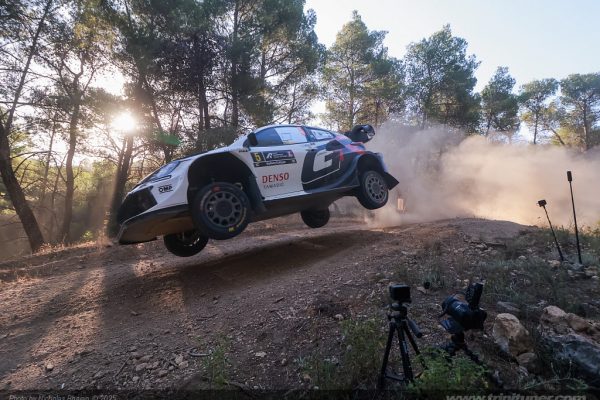When running a collision repair workshop, having the right tools is essential. The quality of your work depends not only on the skills of your technicians but also on the tools and equipment they use. Choosing the right collision repair tools for your workshop can be a daunting task, given the variety of options available on the market. This article will guide you through the process of selecting the most suitable tools to ensure efficiency, safety, and high-quality results.
1. Understand the Basics of Collision Repair
Before diving into the specific tools required for collision repair, it’s important to understand the basics of what collision repair involves. Collision repair typically refers to the process of restoring a vehicle to its original condition after an accident. This process can include everything from repairing dents and scratches to replacing entire body panels or mechanical components. As a result, the tools required can range from basic hand tools to sophisticated computerized equipment.
2. Assess Your Workshop’s Needs
Every workshop has different needs depending on its size, the type of vehicles it services, and the volume of work it handles. Some workshops specialize in specific types of repairs, such as frame straightening or paintless dent removal, while others may offer a full range of services. Here are some questions to consider:
- What types of repairs do you specialize in?
- How many technicians work in your workshop?
- What is the most common type of vehicle you work on?
- What is your budget for new tools and equipment?
Answering these questions will help you narrow down the types of tools you need. For example, if your workshop focuses on high-end luxury vehicles, investing in precision tools and advanced diagnostic equipment is crucial.
3. Invest in High-Quality Hand Tools
Hand tools are the backbone of any collision repair workshop. These include items like hammers, dollies, wrenches, screwdrivers, and pliers. Investing in high-quality hand tools is essential for ensuring durability and reliability. Cheap tools can break easily and may not provide the precision needed for complex repairs.
When selecting hand tools, consider the following:
- Ergonomics: Choose tools that are comfortable to hold and use, as this reduces fatigue and the risk of injury.
- Material: Tools made from high-quality steel are more durable and less likely to break or wear out quickly.
- Brand Reputation: Established brands often offer better quality and longer warranties, which can save you money in the long run.
4. Essential Power Tools for Collision Repair
Power tools can significantly increase the efficiency and speed of collision repairs. Some of the essential power tools that every workshop should have include:
- Electric and Pneumatic Sanders: These are used for smoothing out body panels and preparing surfaces for painting.
- Drills and Impact Wrenches: Useful for removing and installing various components.
- Grinders and Cutting Tools: Essential for cutting through metal panels and removing rust or damaged parts.
- Welding Equipment: Crucial for joining metal parts, especially when replacing body panels.
When purchasing power tools, consider whether electric or pneumatic tools are better suited for your needs. Pneumatic tools are generally more powerful and are commonly used in professional workshops, but they require an air compressor system. Electric tools are more portable and easier to maintain but may not offer the same level of performance.
5. Consider Specialized Equipment
Specialized equipment is often necessary for more advanced collision repair tasks. This includes frame straighteners, paint booths, and computerized diagnostic machines. One highly recommended option is the Car O Liner system, a trusted name in the collision repair industry.
Car O Liner provides comprehensive solutions for measuring, straightening, and aligning vehicle frames and bodies. Investing in such systems can significantly improve the accuracy and quality of your repairs, leading to higher customer satisfaction and reduced rework.
6. Ensure You Have Proper Safety Equipment
Safety should always be a top priority in any workshop. Collision repair involves working with sharp metal, heavy objects, and potentially hazardous chemicals. To protect your technicians and comply with workplace safety regulations, make sure to invest in proper safety equipment, including:
- Personal Protective Equipment (PPE): Such as gloves, safety glasses, ear protection, and steel-toed boots.
- Ventilation Systems: Especially important when working with paints and solvents to prevent the buildup of harmful fumes.
- Fire Safety Equipment: Like fire extinguishers, fire blankets, and proper storage for flammable materials.
- First Aid Kits: Well-stocked and easily accessible in case of accidents.
7. Digital Tools and Software
As technology continues to evolve, incorporating digital tools and software into your workshop can enhance efficiency and accuracy. Diagnostic software and scanners are invaluable for identifying issues with modern vehicles, especially those with advanced electronic systems.
- Diagnostic Scanners: These devices help in identifying faults and error codes, allowing for quicker and more accurate repairs.
- Repair Information Systems: Access to digital repair manuals and databases can provide technicians with the information they need in real-time.
- Inventory Management Software: Helps in keeping track of parts, tools, and supplies, ensuring that your workshop runs smoothly and efficiently.
8. Evaluate the Cost vs. Benefit
While investing in high-quality tools and equipment is crucial, it’s important to evaluate the cost versus the benefit of each purchase. High-end tools often come with a higher price tag, but they also offer better performance, durability, and a longer lifespan. Consider the long-term benefits of your investment, such as improved repair quality, reduced rework, and increased customer satisfaction.
9. Keep Up with Industry Trends
The collision repair industry is constantly evolving with new tools, techniques, and technologies. To stay competitive, it’s important to keep up with these trends. Attending trade shows, participating in training programs, and networking with other professionals can provide valuable insights into the latest innovations in collision repair tools and equipment.
10. Build Relationships with Suppliers
Having a good relationship with your tool and equipment suppliers can be beneficial for your workshop. Suppliers can offer advice on the latest products, provide demonstrations, and offer after-sales support and training. Building a rapport with suppliers can also lead to better pricing, extended warranties, and quicker delivery times.
11. Training and Certification
No matter how good the tools and equipment are, they are only as effective as the people using them. Providing regular training for your technicians on how to use new tools and equipment is essential. Consider enrolling your team in certification programs offered by recognized institutions to ensure they are up to date with the latest repair techniques and safety standards.

12. Regular Maintenance and Calibration
Once you’ve chosen the right tools and equipment for your workshop, maintaining them is crucial. Regular maintenance and calibration ensure that tools perform at their best and have a longer lifespan. This includes cleaning, lubricating, and storing tools properly, as well as regular checks and servicing of more complex equipment like alignment machines and welders.
Conclusion
Choosing the right collision repair tools for your workshop involves careful consideration of your specific needs, budget, and long-term goals. From basic hand tools to advanced digital systems like Car O Liner, investing in high-quality, reliable equipment is key to running a successful and efficient workshop. By focusing on quality, safety, training, and staying up-to-date with industry trends, you can ensure that your workshop is well-equipped to handle any repair job that comes through the door.



















